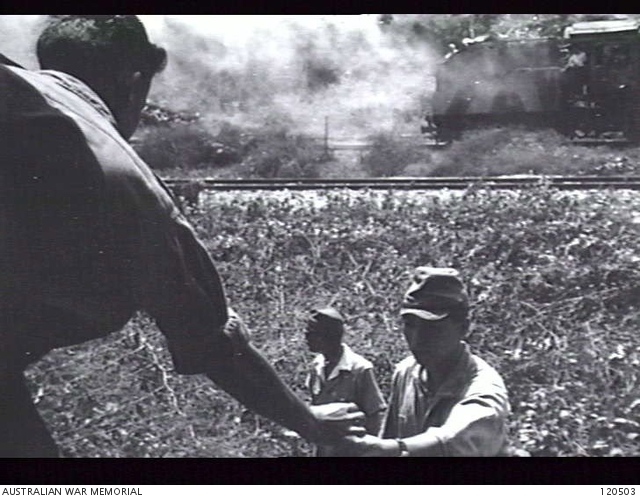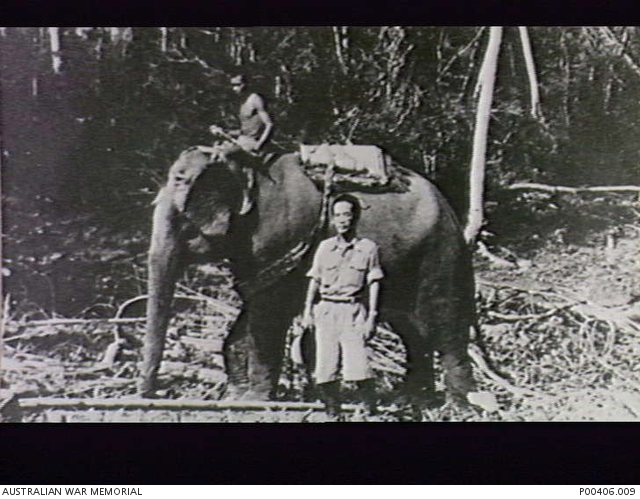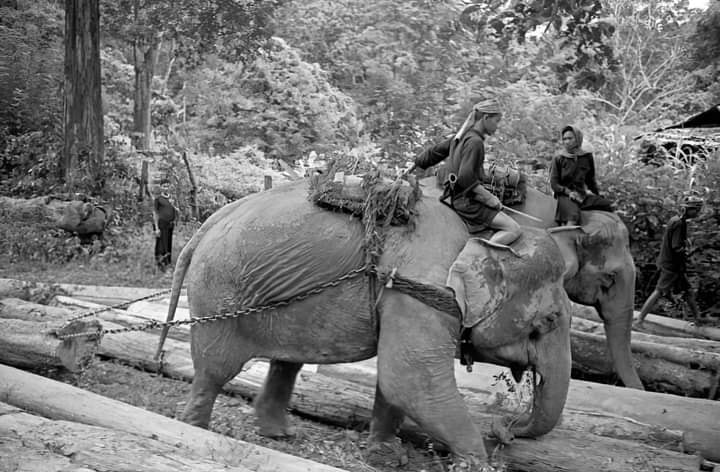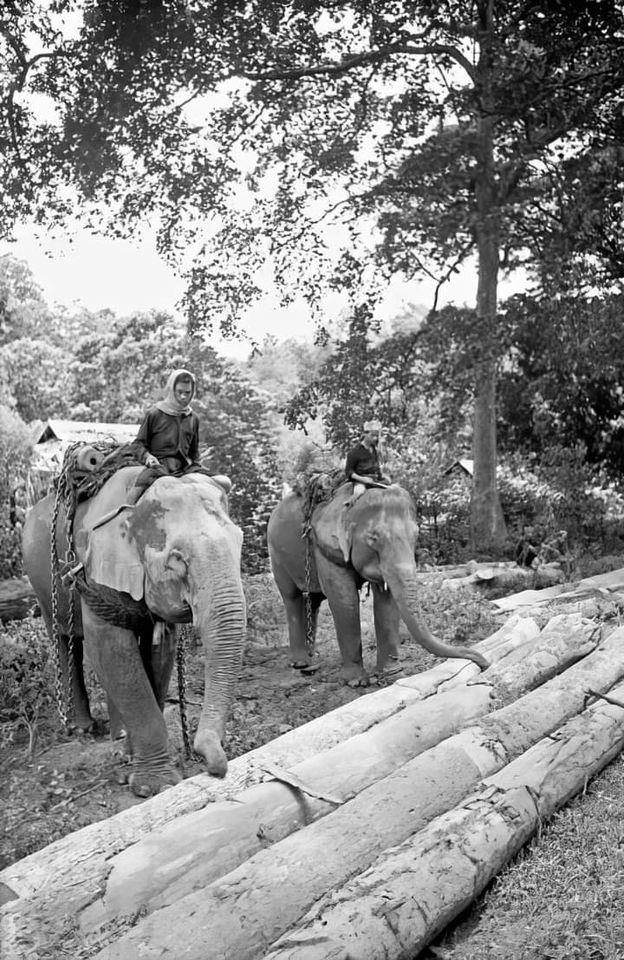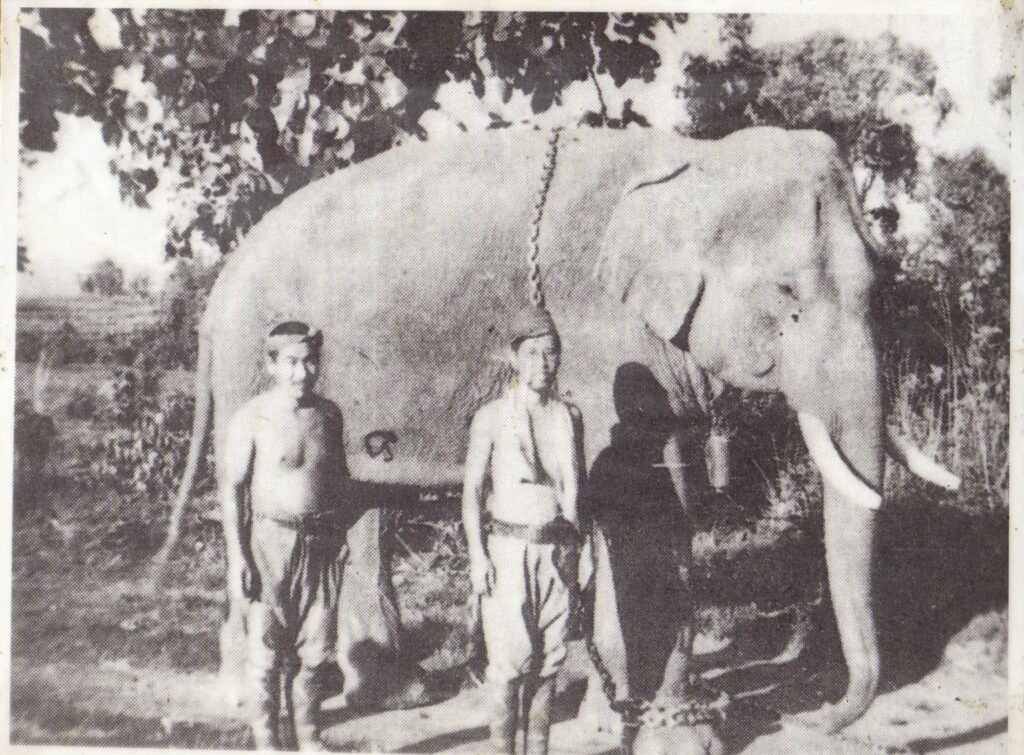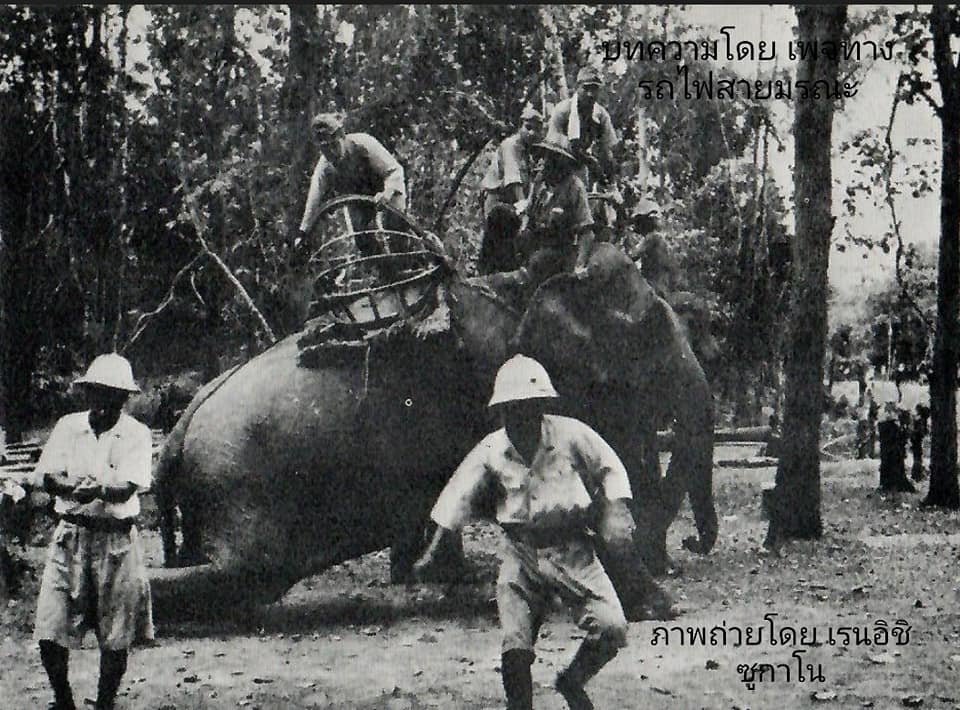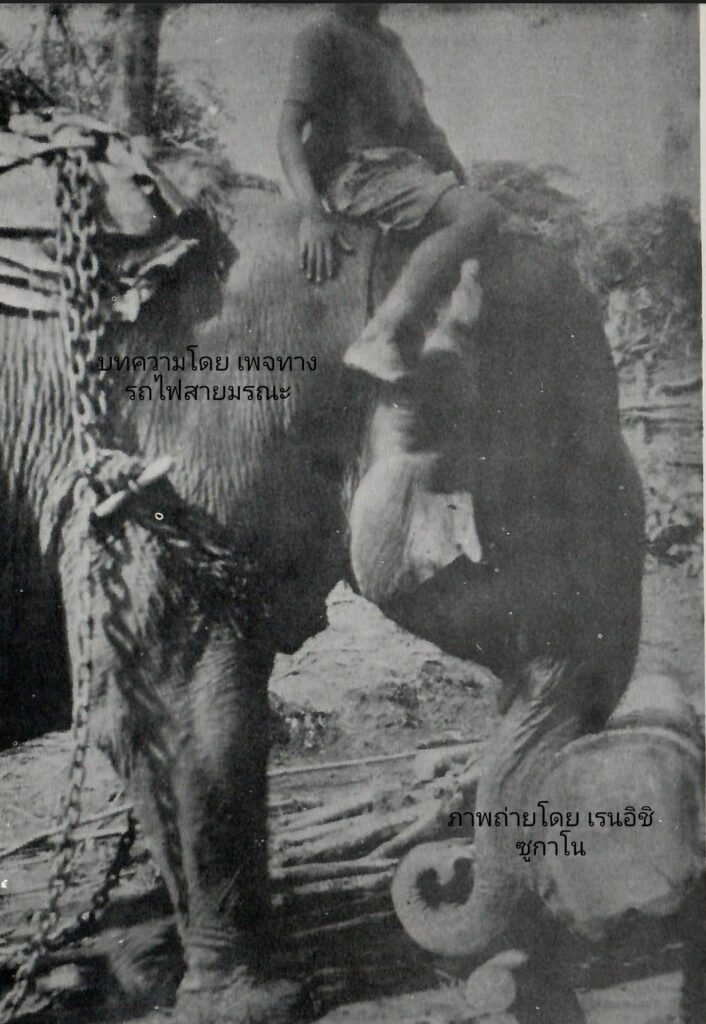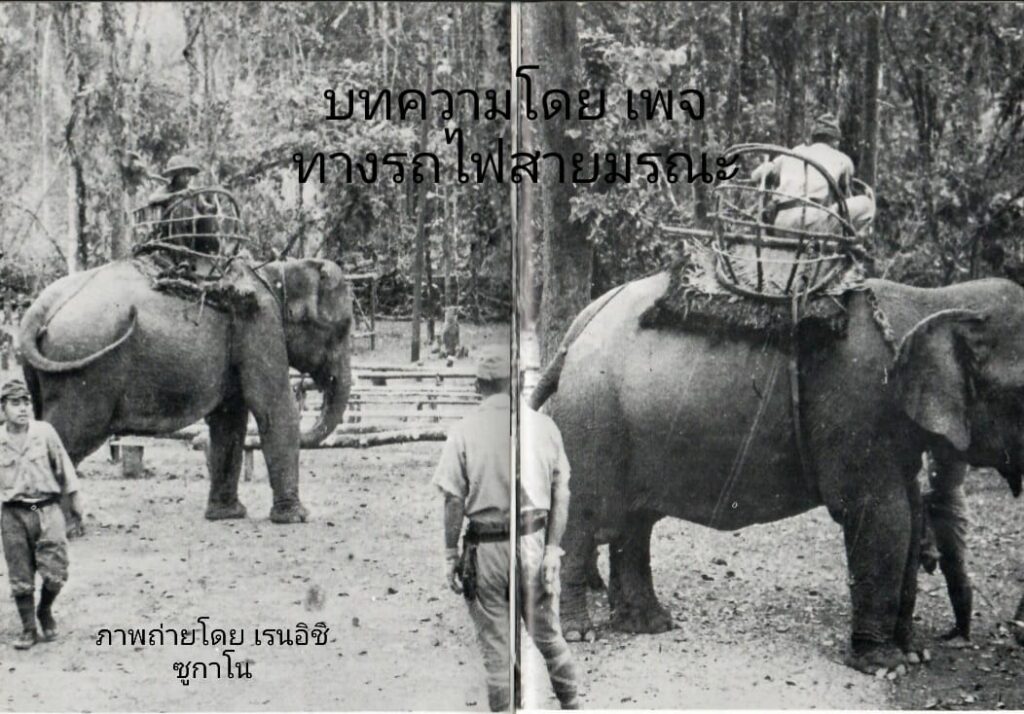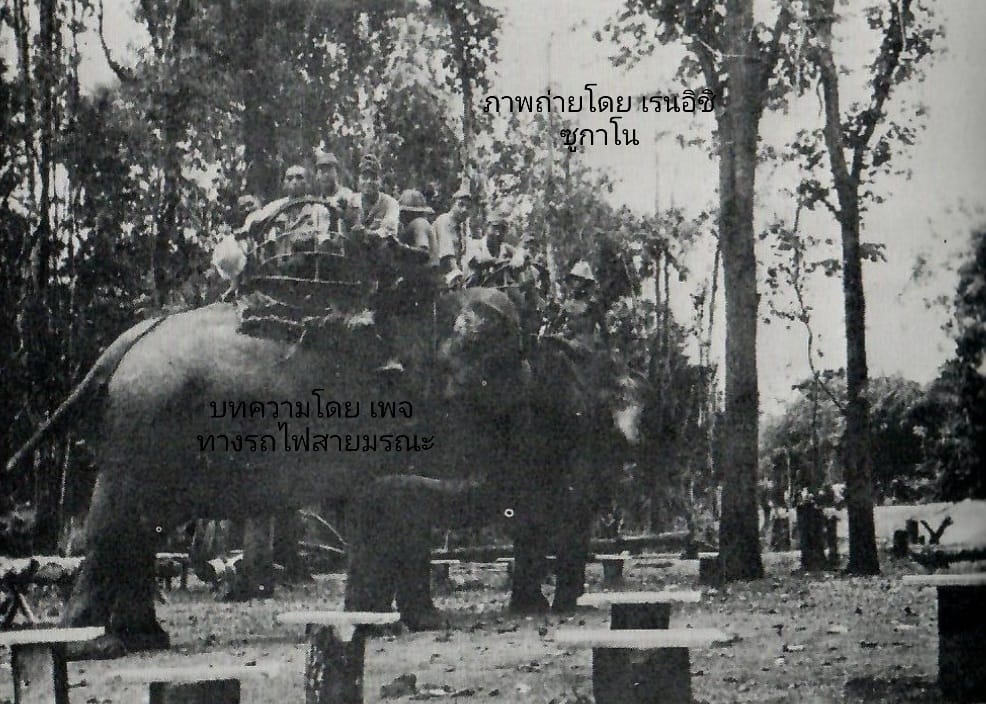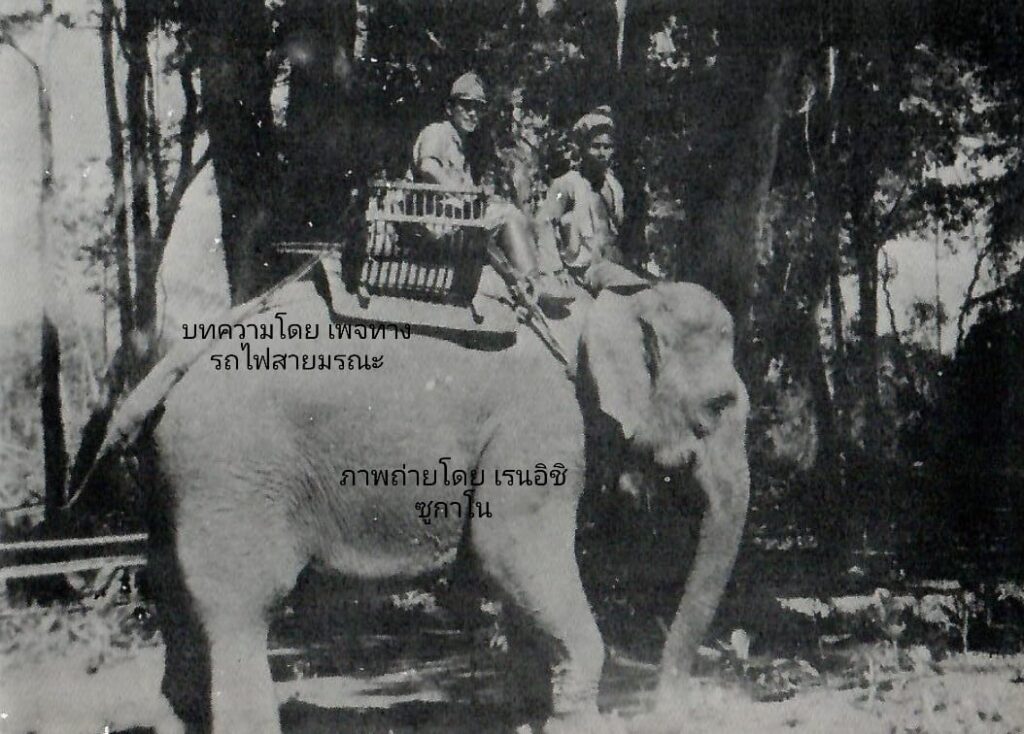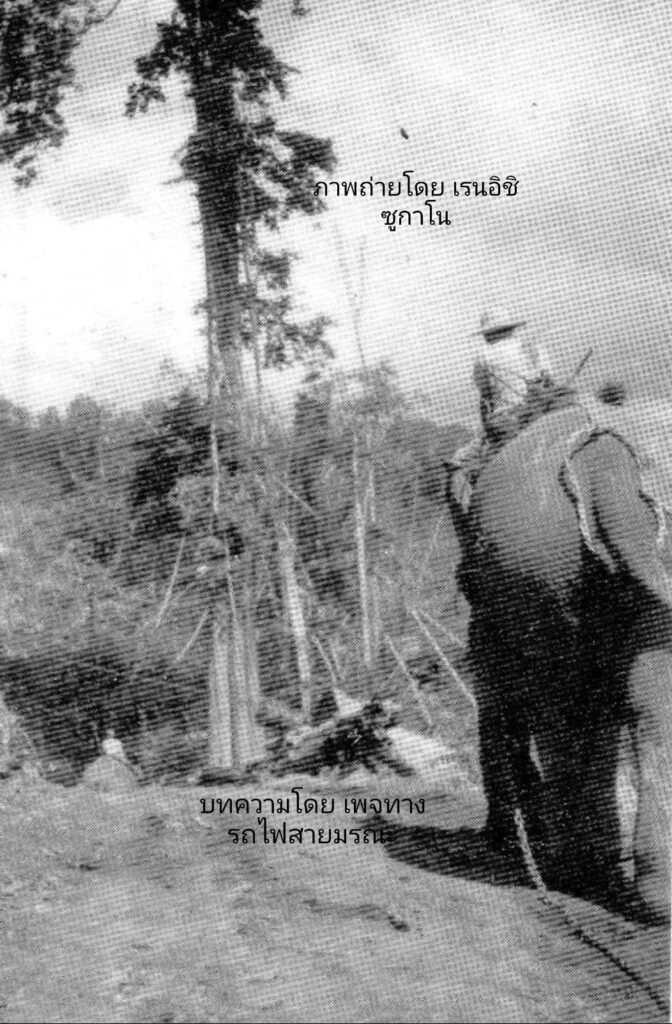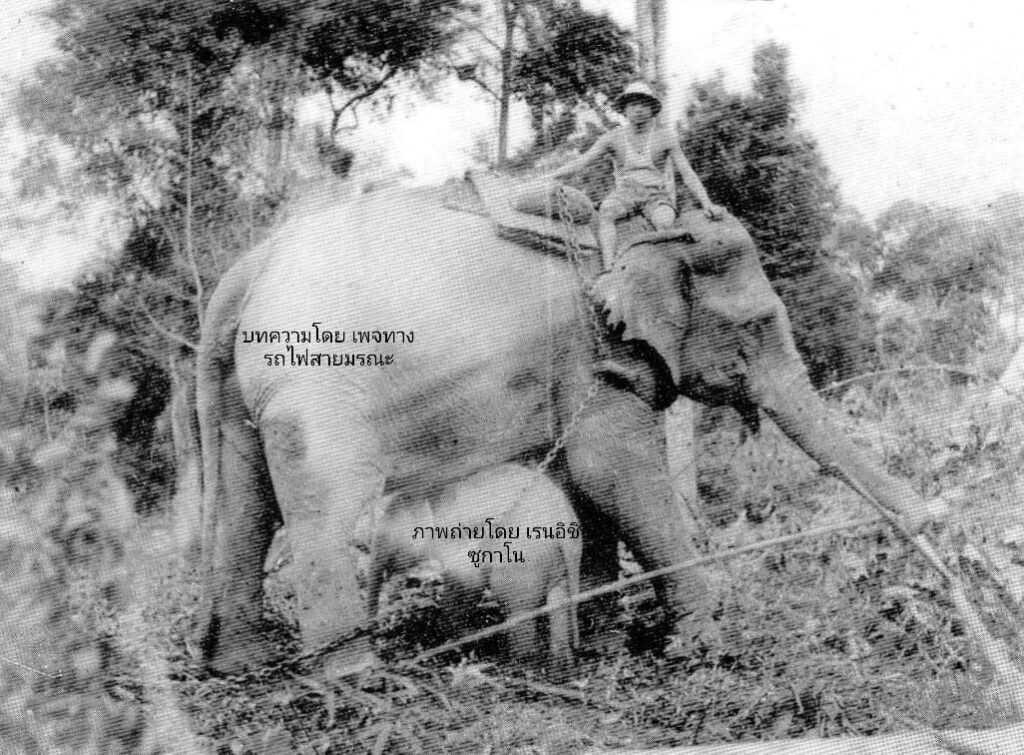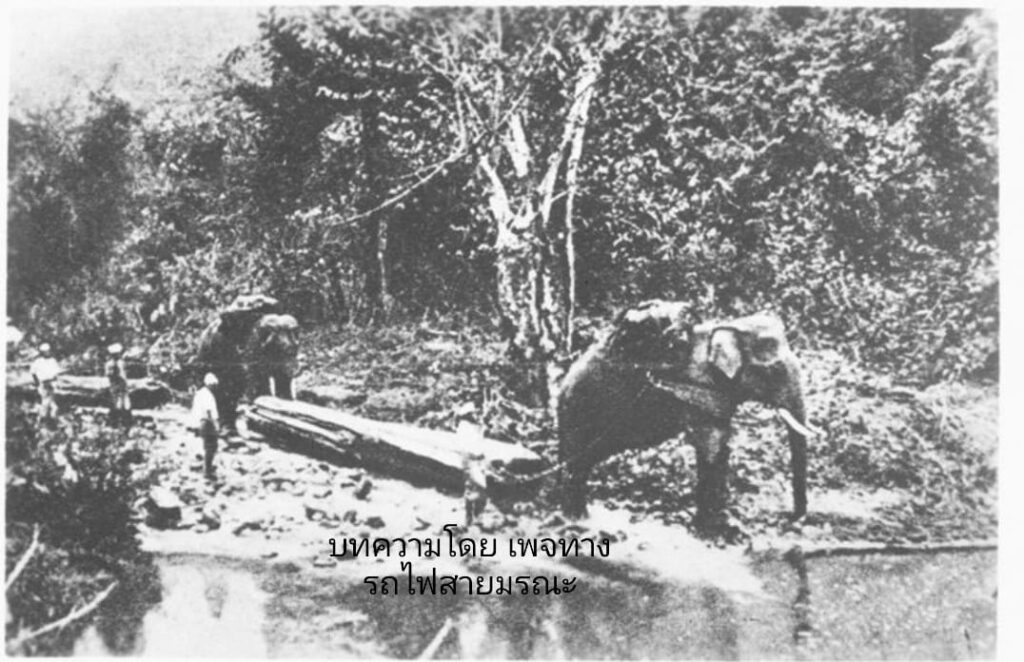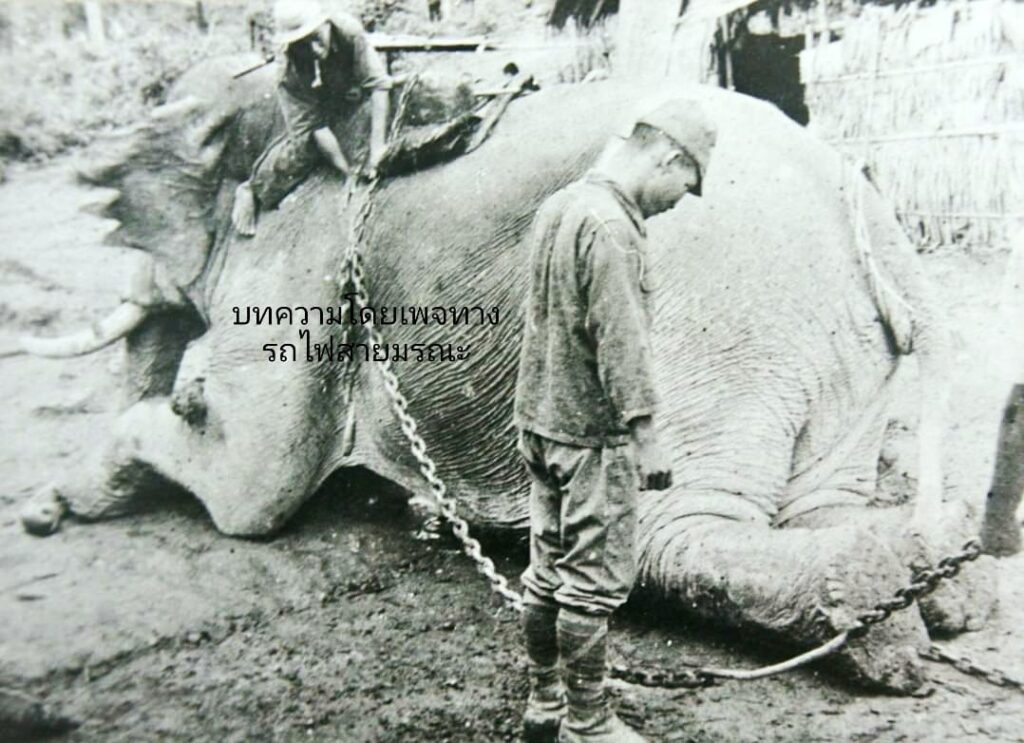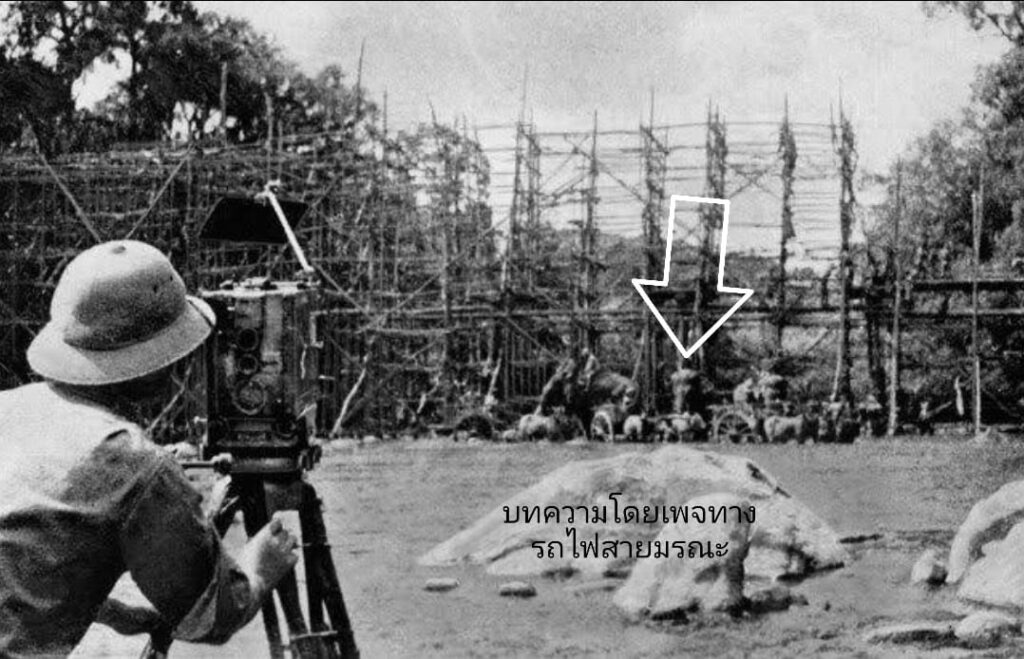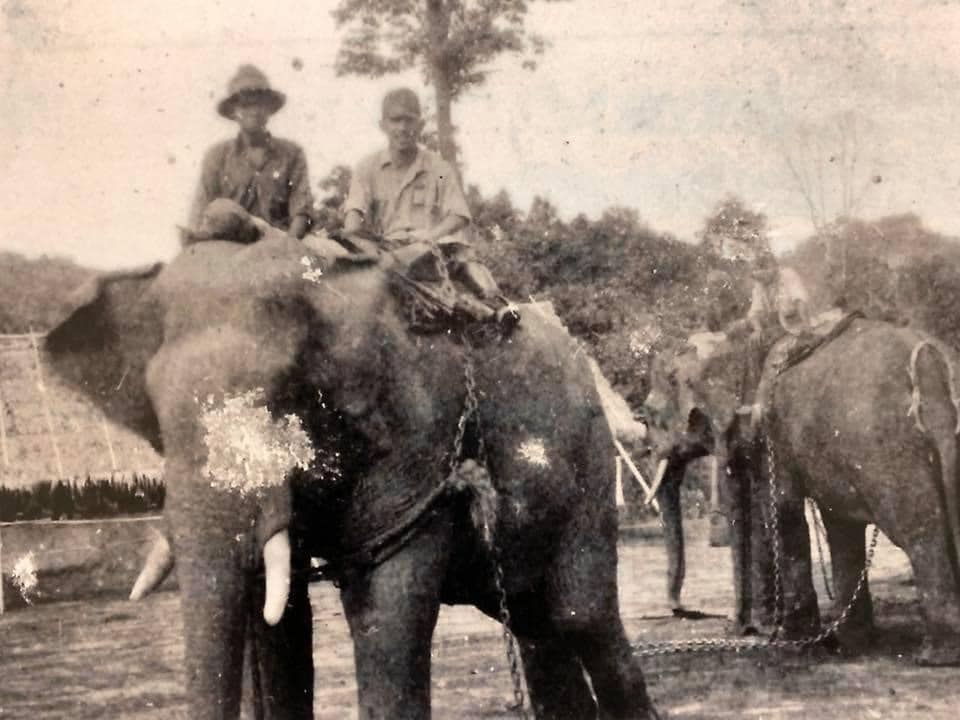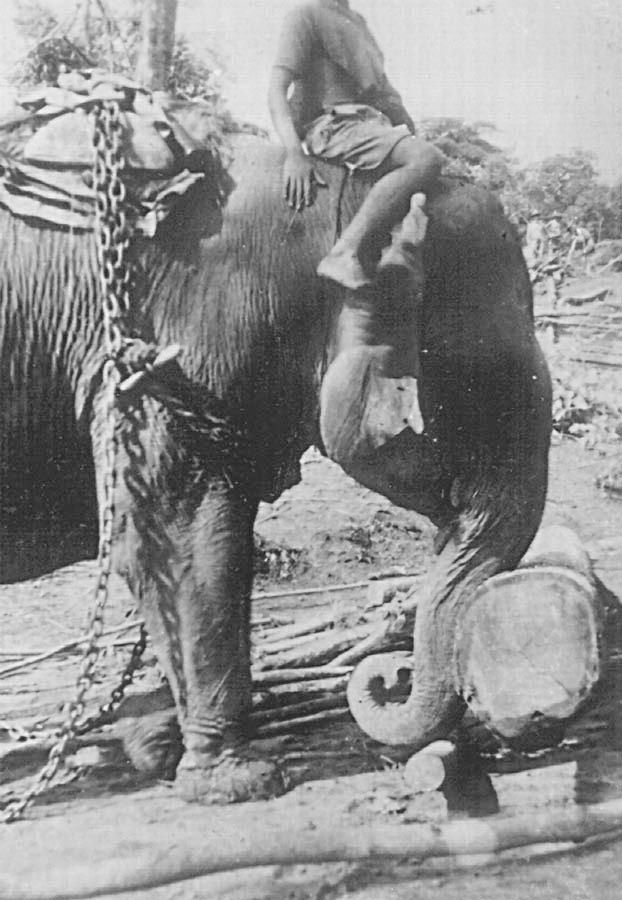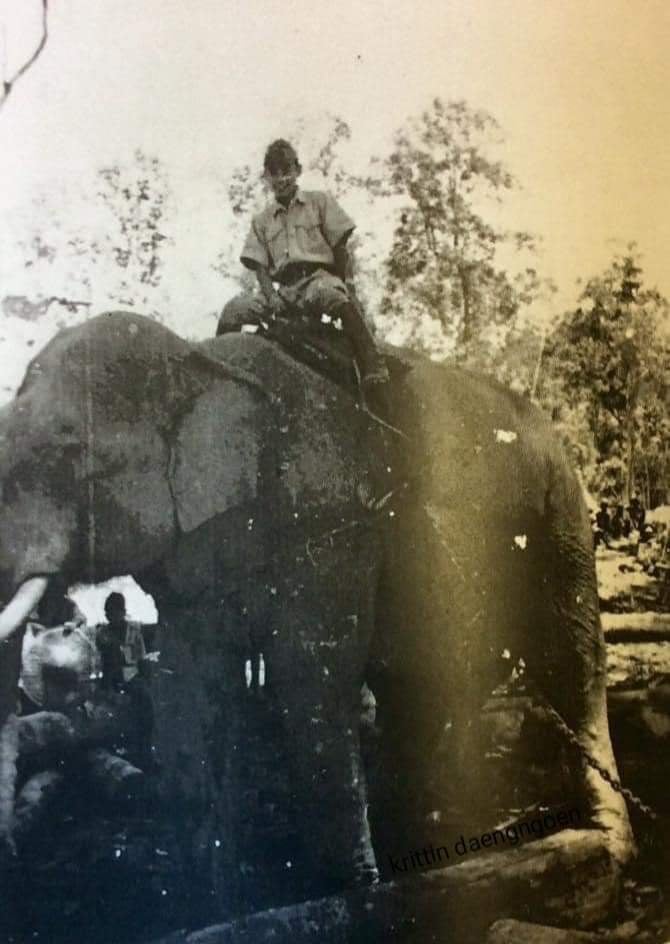It is often said that the TBR was built without the use of heavy equipment; that only manual labor was used. But this is only partially true. While there was no mechanical equipment like bull-dozers or earth moving devices available, there were many elephants. These were used in many ways. It is reported that the IJA survey teams that spent weeks in the jungle mapping and marking the exact route used elephants to blaze the trail and even carry some of their equipment. They likely also kept the crews from getting lost. Once the elephants had bull-dozed a trail through the jungle, the crew would follow that trail back to camp at the end of the day.
Preparing the railway trace through the jungle often required the cutting of trees to clear the path. The elephants would then move those trees and even work to remove the stumps. The hundreds of bridges and trestles required thousands of trees. Sometimes the workers had to go deep into the jungle for find trees of suitable size and shape. Once cut, the elephants pushed and pulled them to the works site. They would also have been utilized to remove boulders in the desired path.
The IJA so valued these beasts and their mahouts that they paid them a wage higher than the POWs. One POW entitled his memoires as “One-Fourteenth of an Elephant” signifying the strength of these beasts compared to a single man! Their care and feeding was easier than that of the POWs as well. Simply tether them of a lead and let them browse the foliage for eatable plants. But a hungry, tired or angry elephant can be dangerous as well. There were incidents where they would revolt and attack those around them. There is even an anecdote where they became food. It seems that one had broken its leg falling down an embankment by the river’s edge. After dispatching the disabled beast, the POWs talked the guards into allowing them to slice off a hind leg and carry it back to the cook house. While not the tastiest of steaks, it provided a nourishing meal for the entire camp.
Late in the war, they became victims of the war in Burma. Again we thank Prof Boggett for a story by a Burmese mahout, who says that pre-war there were as many as 10,000 elephants then by 1945 there were only 2,000. There seems to be three reasons for this: 1) some were killed for their ivory; 2) some were used on the TBR; 3) many were ‘drafted’ as pack animals as the IJA withdrew from Burma into Thailand.
The other documented use of equipment was on a few of the cuttings. The “Compressor Cut” in the Hintok area got its name for the air compressors that were utilized to drive the drills make the holes for the explosives.
Chief Engineer Futamatsu tells us that a special earth moving tool known as a Gatmel. It was needed to dredge the river bottom to bedrock for the placement of the cement pillars to support the iron bridge at ThaMaKam. He had travelled all the way to Singapore before being notified that a suitable item had been located in Bangkok. After a 60 day side trip he returned to his duties as Chief Engineer.
In his memoires, he provides us with lists of other items that were needed for this project such as: 300 tons of explosives and 1000 tons of cement. He also speaks of the 35 “class 56 pony engines” that were converted to burn wood rather than coal. He says that these were made in Osaka and shipped to Thailand and that 400 ‘wagons’ were also imported from Japan. He places the number of elephants employed on the TBR at 400. He also relates an anecdote (that his probably did not witness) where a POW barely escaped be trampled by an enraged beast.
Interestingly, Futamatsu recounts the number of “coolie labour gangs” as 100,000 with 30,000 of them working in Burma. His list of their nationalities is “Indonesians, Malay, Indians, Burmese, Chinese and Thais”. But technically, Indonesia did not yet exist as a country so the natives of the Dutch East Indies would more likely have been referred to by their island of origin. His is the singular mentions of ‘Indians’ unless he was referring to the Tamils since their ancestral home was southern India.
Post-war 9th Railway Regiment soldier Renichi Sukano published the following photos of TBR elephants. The citation says the publication was named “Distant Whistle” but I have been unable to locate such a publication.
